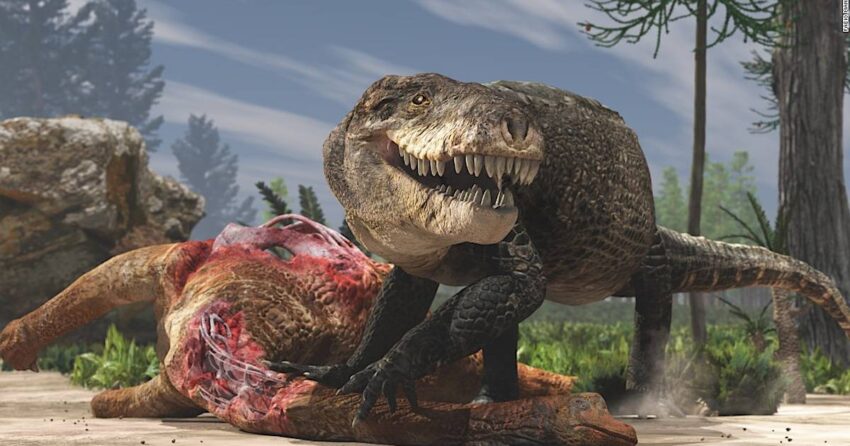Few creatures from Earth’s prehistoric past have captured the imagination of scientists and the public quite like the Tyrannosaurus rex. Towering at up to 40 feet long and weighing an estimated 9 tons, the T-Rex has often been portrayed as the ultimate predator, the apex hunter of the Late Cretaceous period. However, paleontologists have long debated whether the T-Rex was solely a predator or if it also played the role of prey. Let’s delve into the evidence that fuels this fascinating discussion.
The Case for Predator
From its sharp teeth to its powerful legs, many aspects of T-Rex anatomy seem to indicate it was built to hunt. One of its most striking features is its massive skull, armed with serrated teeth up to 12 inches long. These teeth were not only capable of slicing through flesh but also crushing bone, a rare adaptation among predators. This ability, known as “puncture-crush” feeding, allowed the T-Rex to access nutrient-rich bone marrow, giving it an edge over other carnivores.
Additionally, the T-Rex’s forward-facing eyes provided binocular vision, a crucial trait for depth perception while hunting. Its strong hind legs enabled bursts of speed, allowing it to chase down prey, albeit over short distances. Fossil evidence of healed bite marks on large herbivores like Triceratops and Edmontosaurus further supports the theory that the T-Rex actively hunted its meals. These injuries indicate failed predation attempts where the prey managed to escape but not without bearing the scars of the encounter.
The Case for Scavenger
Despite its fearsome reputation, some researchers argue that the T-Rex may have been more of a scavenger than an active predator. Critics of the “predator-only” hypothesis often point to its relatively small arms, which appear almost comically undersized compared to its massive body. These arms, though muscular, seem ill-suited for grappling with prey, leading some to question whether the T-Rex relied more on scavenging carcasses than hunting live animals.
Moreover, the T-Rex’s incredible sense of smell, as indicated by its large olfactory bulbs, would have been advantageous for locating carrion over vast distances. Fossil evidence of a T-Rex’s tooth embedded in a healed Edmontosaurus bone suggests that the dinosaur may have opportunistically fed on weakened or dying animals, rather than actively pursuing and killing them.
Was the T-Rex Also Prey?
While the T-Rex’s size and strength made it a formidable force, it wasn’t entirely invulnerable. Young T-Rexes, significantly smaller and less experienced than adults, may have been at risk of predation from other large carnivores, such as the contemporaneous Dakotaraptor. Fossilized evidence of intraspecific combat—T-Rexes fighting each other—also suggests that individuals could be injured or killed in territorial disputes, making even the king of the dinosaurs susceptible to becoming prey under specific circumstances.
The Predator-Scavenger Spectrum
Modern science increasingly supports the idea that the T-Rex was neither exclusively a predator nor solely a scavenger, but rather an opportunistic feeder that adapted to circumstances. Much like modern-day lions or hyenas, the T-Rex likely hunted live prey when the opportunity arose but wouldn’t hesitate to scavenge a free meal. This adaptability would have been a key survival strategy in the dynamic and often harsh ecosystems of the Late Cretaceous period.
Conclusion
The question of whether the T-Rex was a predator or prey highlights the complexity of prehistoric ecosystems and the behaviors of their inhabitants. While its physical traits strongly suggest predatory capabilities, evidence also supports scavenging behaviors and even occasional vulnerability to predation. As paleontologists uncover more fossils and develop advanced analytical techniques, our understanding of this iconic dinosaur’s life will undoubtedly continue to evolve. For now, the T-Rex remains a fascinating paradox: a creature both fearsome and adaptive, embodying the dual roles of hunter and opportunist in its ancient world.For more information click dinorepeat.com

